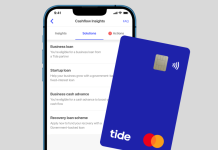In a year where banks are grappling with crisis, and the Federal Reserve is attempting to cut interest rates close to zero to stave off looming economic concerns, Revolut, the fifth most valuable fintech in Europe, is going in the other direction. Last week, Revolut boldly announced that, rather than cut interest rates on savings accounts, it will be offering American savers an added 4.5% on top of their existing base annual interest rates. However, the bonus comes with a catch.
Founded in 2015 Revolut is a crypto-friendly internet banking application. Since its founding, Revolut has veered left where other institutions have opted to veer right. For instance, when governments globally were enforcing pandemic lockdowns, Revolut decided to push forward with launching operations in the U.S. in March. Choosing to stray from the status quo appears to be a successful ploy for this startup that is now valued at $5.5 billion after its most recent funding round earlier this year. The company also recently announced that it has plans to apply for a charter with the Federal Reserve Bank of San Francisco and California’s Division of Financial Institutions.
Currently, Revolut already offers a 5% rate on savings to its two subscriber accounts: “Premium” (costing $10), and “Metal” (costing $17). A 4.75% rate is offered to standard, non paying customers. As a comparison, personal finance website Bankrate shares that 5% is well above the current market leading rate of 0.83% offered by Vio. The current national average rate is 0.09%. The added 4.5% will be given on a monthly basis after calculations are done daily based on an annualized rate.
In terms of the catch, rather than using lending to earn interest as is typically standard, Revolut will offer the bonus interest on the company’s revenue earned via the startup’s spending card. This interest comes from the fees it charges merchants every time customers use their card, which makes up 63% of the company’s revenue. “The model is designed to ensure that customers need to use Revolut as a primary spending card to benefit from the full rate,” a Revolut spokesperson told CNBC. “Because interchange is so high in the U.S., we won’t create loss-making customers.”
To earn the top rate of interest users will need to be paying customers. Also, the interest earned will be on the amount they spend rather than the total in their account. So, if a user has $1000 in their account before an interest payment but only spends $100, the bonus will apply to the $100.
With only 150,000 customers in the U.S market compared to the millions banking with Citi or JPMorgan, and the 8 million users signed up to Chime, it will be interesting to see if Revolut’s incentive based model of interest will successfully draw customers. The company itself believes that the risk will pay off.
























